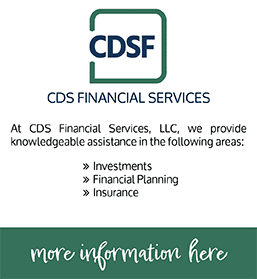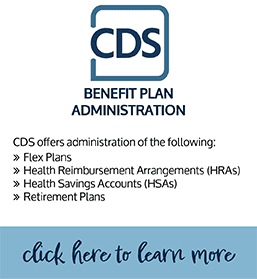QuickBooks has provided an update with new payroll items to use for tracking paid sick and leave time for COVID-19 under the American Rescue Plan Act (ARPA). Paychecks dated after March 31, 2021 are now subject to employer social security tax. The credit for providing paid sick and leave time is still available.
Learn how to pay your employees paid leave if they’ve been affected by COVID-19 with QuickBooks Desktop Payroll.
Before you can pay your employees, you need to do a few things. Here’s what to do.
Step 1: Determine your employee’s benefit and hourly rate
Before you can give your employees this sick leave, you first need to figure out what pay leave type they fall under and their hourly rate.
Benefit type
Under the FFCRA, there are three different types of paid leave. Employers can also get a credit for any health insurance premiums they pay for impacted employees while they are on leave.
- National Paid Leave Employee: Your employee is sick and under quarantine with COVID-19.
- National Paid Leave Family: Your employee is taking care of a family member who is sick or impacted with COVID-19.
- National Paid Leave FMLA: Your employee is taking leave under the Family Medical Leave Act (FMLA) to care for children under 18 whose school or child care is closed because of COVID-19.
- National Paid Leave – Health Credits: If you are contributing to an employee’s health insurance during the time they are being paid under the FFCRA provisions, you can track this amount and a credit will be applied to your federal tax liability.
Hourly rate
In most cases, you’ll pay your employee the hourly rate you’ve paid them over the last 6 months. However, there are a few exceptions that correspond with the Regular Rate of Pay Under the Fair Labor Standards Act (FLSA).
- Employees on commission: You need to create an hourly rate for them. Their hourly rate under the FFCRA needs to be equal to the commission paid over the last 6 months divided by their hours worked in the 6 month period.
- Tipped Employees: You’ll need to ensure you include your employees tipped income when entering their paid leave or FMLA expansion pay. Review the amount of income they received over the last six months. Then average it out over the number of hours they worked in the same period. You’ll need to change the employee’s pay rate during this time and ensure you’re paying them at least minimum wage required under the FLSA, your state, or local jurisdiction.
Step 2: Set up your expense accounts for the paid leave
Once you know which type of paid leave type is applicable to your employee’s situation, setting up this account will help track the eligible wages to use towards tax credits later on.
Important: if you have already set up an account to track paid leave for paychecks before April 1, 2021, you don’t need to set up a second one.
- Go to the Lists menu, then select Chart of Accounts.
- Select the Account ▼ dropdown, then select New.
- Choose Expense, then select Continue.
- From the Account Type dropdown, select Other Expense.
- Give your expense account a name, such as COVID-19 Expenses, in the Name field, fill out all the relevant information, and select Save and Close.
Step 3: Set up payroll items
Once you set up your liability and expense accounts, you need to set up payroll items to track each type of paid leave found under the FFCRA that you identified in step 1.
Important: For paychecks created April 1, 2021 to September 30, 2021 paid leave is now subject to Employer Social Security tax and you must use the steps to create new payroll items to comply with the American Rescue Plan Act.
Step 4: Confirm you have a new National Paid Leave Credit tax item, or set it up
You should have a new tax item automatically added in your payroll item list called National Paid Leave Credit. If you don’t see this tax item, follow the steps below to set it up. You’ll need this to ensure you’re tracking the tax credits.
- Go to the Employees menu, then Manage Payroll Items, then select New Payroll Item.
- Select Custom Setup, then select Next.
- On the Payroll item type window, select Other Tax, then select Next.
- On the Other Tax window, select National Paid Leave Credit, then select Next.
- In the Name used in paychecks and payroll report window, enter National Paid Leave Credit in the text field, then select Next.
- In the Agency for company-paid liability window, select the agency you pay taxes too from the dropdown, select COVID-19 Expenses in the Liability account dropdown, and select COVID-19 Expenses (or whatever you named the expense account) in the Expense account dropdown, and then select Next.
- From the Taxable Compensation window, select Finish.
Next steps with the FFCRA
- Run a regular payroll
- Review and claim your tax credits
After you’ve run your payroll with the paid leave, you should be aware of how it affects your taxes.
- For the ARPA, we’re waiting for more information from the IRS, so check back soon for updates about tax payments and filings.
- Under the FFCRA, you’ll get credit towards your Federal Tax deposit for the wages and Employer Paid Health Insurance premiums paid under this act.
To ensure you’ve been tracking the leave correctly, you can review your payroll reports to see how many hours you’ve used in these tax credits.
Questions or need help? Contact one of our QuickBooks ProAdvisors.
Regulations and guidance from the SBA and the U.S. Department of Treasury on the PPP are evolving rapidly, and the information contained herein be outdated. Please refer to the latest guidance from SBA and Treasury to confirm current program rules. The funding described in this email is made available to businesses located in the United States of America and are not available in other locations. This content is for information purposes only and should not be considered legal, accounting or tax advice, or a substitute for obtaining such advice specific to your business. Additional information and exceptions may apply. Applicable laws may vary by state or locality. No assurance is given that the information is comprehensive in its coverage or that it is suitable in dealing with a customer’s particular situation. Intuit Inc. does not have any responsibility for updating or revising any information presented herein. Accordingly, the information provided should not be relied upon as a substitute for independent research. Intuit Inc. does not warrant that the material contained herein will continue to be accurate, nor that it is completely free of errors when published. Readers should verify statements before relying on them.





